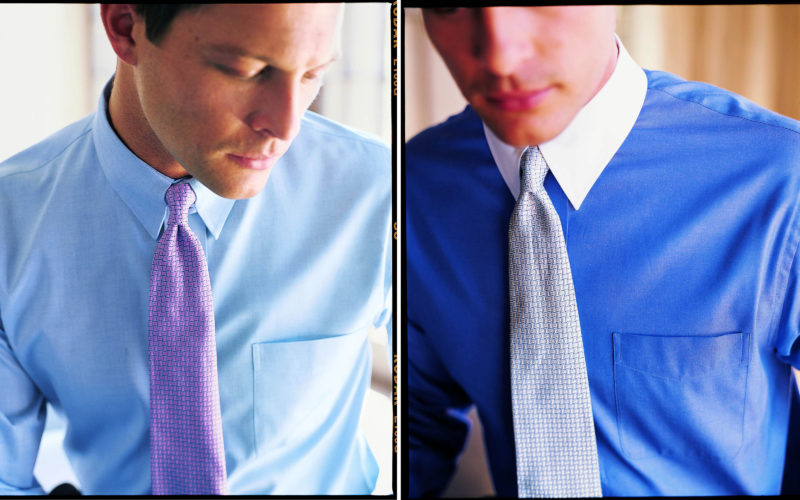Q. I have been upgrading my wardrobe and have decided to go with your suggestion of all-cotton shirts. But I find that they shrink and don’t fit after a couple of wearings. What do I need to do besides buying new shirts after 3 wearings?
A. There are two possible solutions – one is buying the correct size, the other is using the correct cleaning techniques. When I say “correct,” I am implying that one of those two (your sizing or your cleaning) you are doing incorrectly, and I am pretty confident that is the case.
If you noticed shrinking shirts, you might also notice that your pants are “shrinking,” too! The possibility is that you have gone up a size. Nothing stays the same forever. I keep hearing men say: “But I’ve worn a 15½ 33 shirt all my life.” In reality, many of them may now need a 16 or even a 16½ (neck) and perhaps also a 34 (sleeve). Even without gaining weight, exercise and body redistribution can make a larger size necessary. Clothing (especially cotton clothing) will reduce slightly with washing, and will rapidly begin to feel tight.
It’s a good idea to have yourself measured . . . in more than one store. Then believe what you hear. An often misunderstood, important point: don’t go by your exact neck size. If your neck measures exactly 15½, your correct shirt size may be 16; buying a size 15½ shirt could be a mistake. Now, your neck’s getting a half-size bigger isn’t that dramatic a change. Not to worry. Just accept it.
The longer sleeve length is not because your arms have grown. But rather, as men get more knowledgeable and sophisticated in their dress, they realize the advantage of showing a bit of “linen” shirt cuff (the expression the clothing industry uses to describe the half-inch of cotton shirt sleeve that is meant to show, extending below the jacket’s sleeve). Each manufacturer has his own fit and once you have found the one that’s right for you, it makes life easier to continue to buy that brand.
The other possibility is that your shirts are shrinking when washed in too-hot water or dried in a too-hot dryer. A new 100 percent cotton shirt should be just a touch too big in the collar and a very little too long in the sleeves when you first put it on, because all shrinkage cannot be prevented. If an all-cotton shirt fits you perfectly when it’s brand new, it is likely to be a smidgen too tight at the neck and slightly short in the sleeves after several launderings. Remember, you should not be attempting to boil and bake your shirt on each cleaning. Detergent will clean at any temperature. Even a white cotton shirt will come clean in warm or cool water and will stay closer to its original size and less wrinkled with less drying . . . and with ironing.
With your switch to all-cotton shirts, you are moving to classic, luxurious, expensive fabric that requires ironing. Many men may find it necessary to have their shirts laundered professionally for the best look. For others, wash-and-wear is the only practical route; if such is the case for you, remember they, too, need some slight ironing for a perfect look. With wash-and-wear confine your selection to blends with a lower, rather than a higher, percentage of synthetic. While I am a huge fan of all-natural fibers (especially, all-cotton for shirts), recent technology has improved to the point where a small percentage of synthetic in the fabric can make shirt care a lot easier so that ironing is not always necessary for a pristine look.
Don’t despair. Your too-tight-in-the-neck shirts and too-short-in-the-sleeve shirts can still work in a casual wardrobe with khakis, jeans, or shorts Just unfasten the top two buttons and roll the sleeves up a turn or two. Today, when so many men have chosen to go tieless, you are right to begin paying more attention to the shirts you wear.
Please send your men’s dress and grooming questions and comments to MALE CALL: Lois.Fenton@prodigy.net









